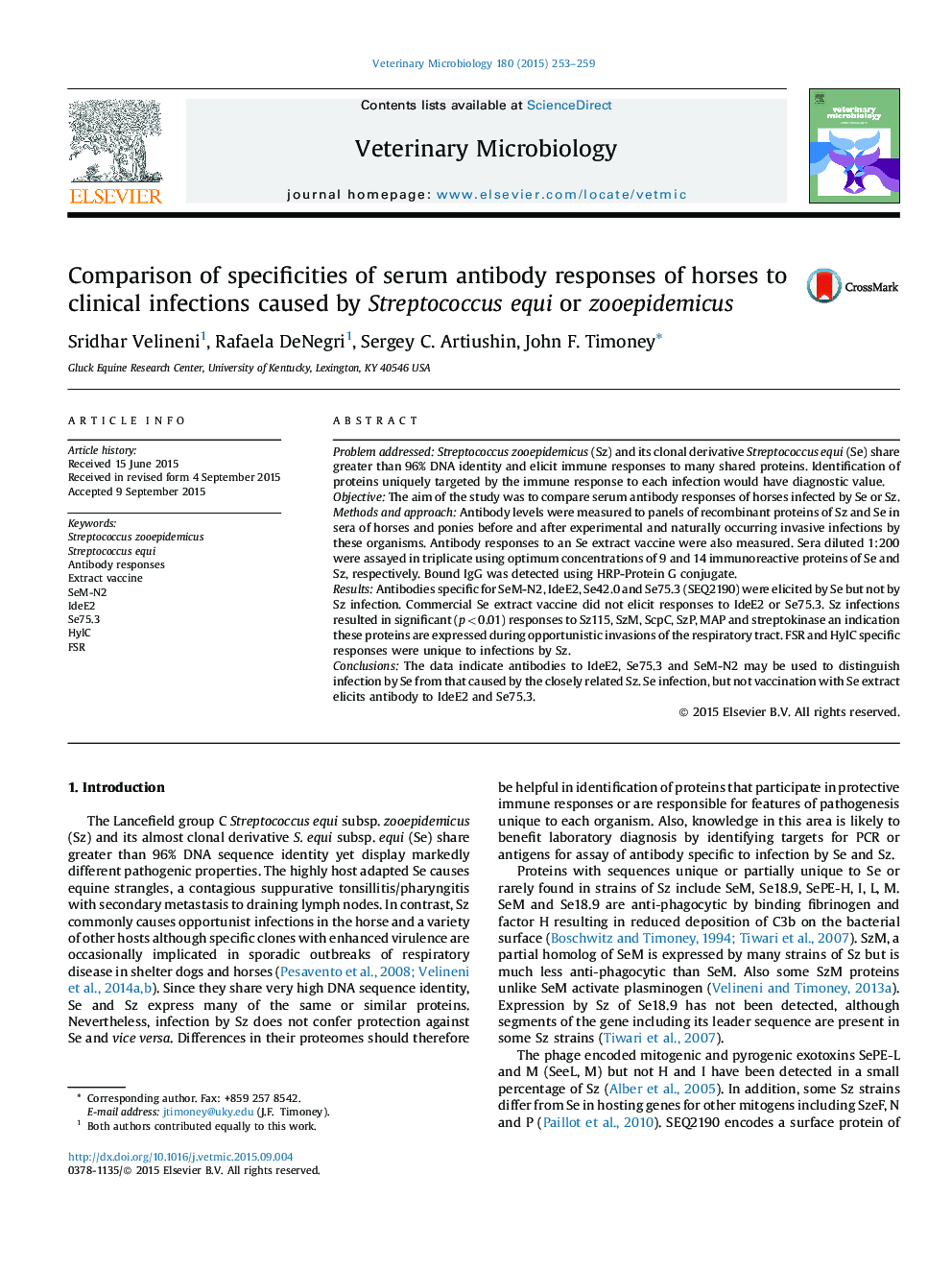| کد مقاله | کد نشریه | سال انتشار | مقاله انگلیسی | نسخه تمام متن |
|---|---|---|---|---|
| 5799814 | 1555344 | 2015 | 7 صفحه PDF | دانلود رایگان |

- S. equi and S. zooepidemicus share 96% DNA identity and express many proteins in common.
- Only 3 of 23 proteins of S. equi and S. zooepidemicus elicited antibody unique to S. equi infection.
- These are platelet activating peptidase IdeE2, antiphagocytic SeM and Se75.3 of unknown function.
- Immunization with extract vaccine does not stimulate IdeE2 and Se75.3 specific antibodies.
- HylC (hyaluronidase C) specific antibody is elicited by S. zooepidemicus but not by S. equi.
Problem addressedStreptococcus zooepidemicus (Sz) and its clonal derivative Streptococcus equi (Se) share greater than 96% DNA identity and elicit immune responses to many shared proteins. Identification of proteins uniquely targeted by the immune response to each infection would have diagnostic value.ObjectiveThe aim of the study was to compare serum antibody responses of horses infected by Se or Sz.Methods and approachAntibody levels were measured to panels of recombinant proteins of Sz and Se in sera of horses and ponies before and after experimental and naturally occurring invasive infections by these organisms. Antibody responses to an Se extract vaccine were also measured. Sera diluted 1:200 were assayed in triplicate using optimum concentrations of 9 and 14 immunoreactive proteins of Se and Sz, respectively. Bound IgG was detected using HRP-Protein G conjugate.ResultsAntibodies specific for SeM-N2, IdeE2, Se42.0 and Se75.3 (SEQ2190) were elicited by Se but not by Sz infection. Commercial Se extract vaccine did not elicit responses to IdeE2 or Se75.3. Sz infections resulted in significant (p < 0.01) responses to Sz115, SzM, ScpC, SzP, MAP and streptokinase an indication these proteins are expressed during opportunistic invasions of the respiratory tract. FSR and HylC specific responses were unique to infections by Sz.ConclusionsThe data indicate antibodies to IdeE2, Se75.3 and SeM-N2 may be used to distinguish infection by Se from that caused by the closely related Sz. Se infection, but not vaccination with Se extract elicits antibody to IdeE2 and Se75.3.
Journal: Veterinary Microbiology - Volume 180, Issues 3â4, 18 November 2015, Pages 253-259